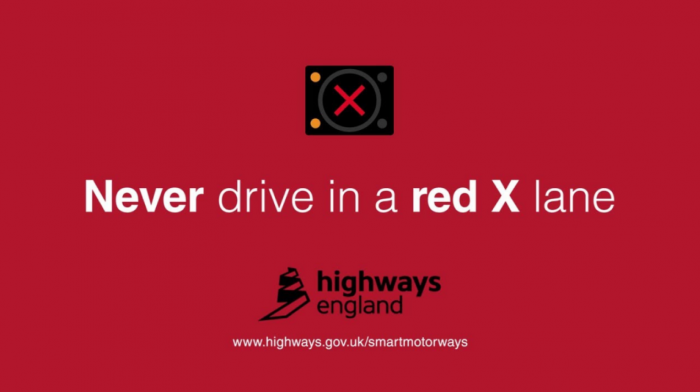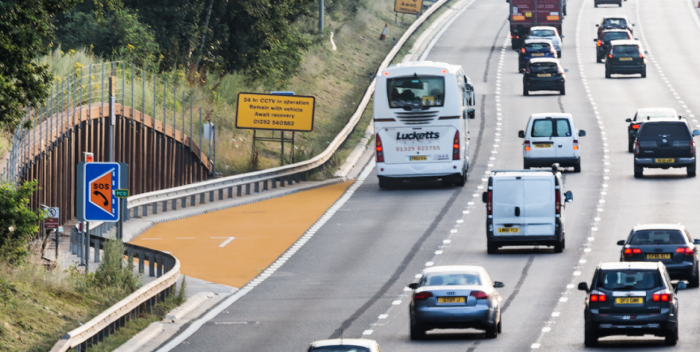A young driver’s guide to smart motorways
All across the UK, ‘smart’ motorways are being rolled out – but what exactly are they? Sometimes referred to as ‘managed’ motorways, their main aim is to reduce congestion by helping traffic to flow more smoothly, allowing more vehicles to travel along them as a result, especially at peak times. It’s a great idea in theory and should even bring down the amount of emissions pumped out by the vehicles using them. Smart motorways use various traffic management methods and the three main types are:
- “All lane running” where the hard shoulder is turned into a 4th lane that can be used at all times, except when it gets closed because of an accident or some other event, in which case a red ‘x’ is displayed above the lane. Overhead signs display different speed limits at regular intervals, helping to keep traffic flowing smoothly. CCTV means that any problems are spotted quickly and cameras catch out speeders.
- “Dynamic hard shoulder running” motorways on which the hard shoulder is opened up to let normal vehicles drive on it as an extra lane at busy times like the morning and evening rush hours. The overhead signs tell drivers if they can use the hard shoulder or not. Variable speed limits, CCTV and speed cameras are again used on this type of smart motorway, and the hard shoulder is separated by a solid white line instead of a dashed one.
- “Controlled” motorways which are a bit more old-fashioned with a hard shoulder that can only be used in emergency or breakdown situations or by other authorised vehicles. Controlled motorways have either three lanes or four in some places, and the speed limit displayed on the overhead signs once again changes depending on traffic volume and other factors.

Smart motorways require different driving rules and safety tips:
- Like you might have heard, never drive in a lane with a red ‘x’ displayed above it. It’s illegal and dangerous.
- Don’t exceed the changing speed limits displayed overhead. This will help keep traffic flowing, will keep you on the right side of the law and is also safer.
- You’ll know if you can drive on the hard shoulder if the signs say so and it’s separated by a dashed white line. Otherwise it’s to be treated like a normal hard shoulder, only for emergencies unless signs say it can be used temporarily on certain stretches.
- On all lanes running and dynamic motorways, anyone who breaks down or needs to stop for some other genuinely important reason should look for signs to the next emergency refuge area (ERA) marked by a blue sign.
- ERAs are short-length boxes where drivers can call for help using the orange phone provided. Any vehicle ready to re-join live traffic will be let out with help from a Highways patrol vehicle or by the regional control centre temporarily placing a red ‘x’ above the lane so the car can build up speed.

Some useful videos from Highways England, which bring all this to life:
How to drive on smart motorways
Emergency refuge areas
It’s great that something is being done to try to make the UK’s congested motorways run more smoothly, so once all the 50mph roadworks stretches have disappeared, we should all find motorway driving that little bit more enjoyable.